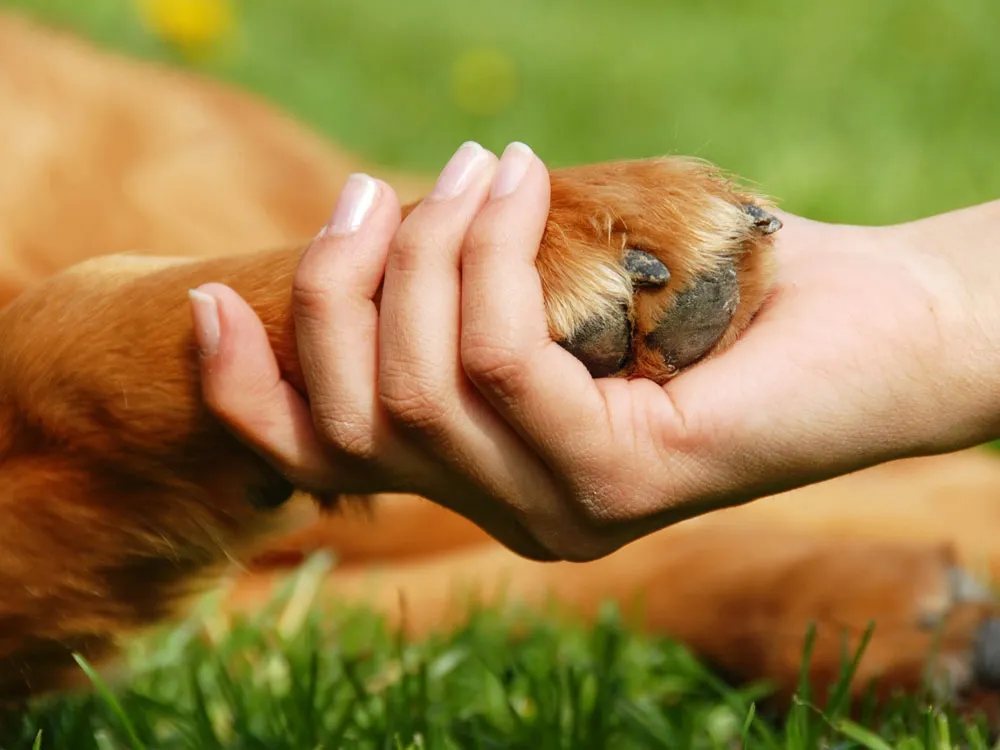Imagine a space where a shy teenager gains confidence while a nervous shelter dog learns to trust humans again. Where every wagging tail tells a story of growth, healing, and mutual transformation. This is the magic of the PAWSitive Helpers Program, a groundbreaking initiative connecting youth with shelter dogs to create meaningful change—for both.
At its heart, the program goes beyond training dogs. It nurtures empathy, responsibility, and emotional resilience in young participants while giving dogs the socialization, care, and love they need to thrive. In a world where mental health challenges and animal welfare issues are pressing, the PAWSitive Helpers Program stands as a beacon of hope.
Table of contents
- The Origins of the PAWSitive Helpers Program
- How the Program Works
- The Benefits for Youth Participants
- The Benefits for Shelter Dogs
- Stories of Transformation
- Evidence Supporting Animal-Assisted Youth Programs
- How Schools and Communities Can Support Similar Programs
- Challenges and How to Overcome Them
- Measuring Success
- A Holistic Approach to Youth and Animal Welfare
- Tips for Teens Interested in Participating
- The Future of Programs Like PAWSitive Helpers
- Conclusion: A Win-Win Transformation
The Origins of the PAWSitive Helpers Program
The program was born from a simple but powerful idea: humans and animals can heal and grow together. Recognizing the untapped potential in both youth and shelter dogs, community leaders and animal welfare advocates collaborated to create an initiative that addresses multiple social challenges simultaneously.
- Youth Empowerment: Teenagers and young adults often struggle with self-esteem, social skills, and emotional regulation. Structured animal interaction provides a supportive environment to develop these qualities.
- Animal Welfare: Shelter dogs frequently arrive scared, anxious, or under-socialized. Working with trained youth volunteers accelerates their rehabilitation and increases their adoptability.
- Community Engagement: The program fosters a sense of civic responsibility, showing young participants that their actions have tangible, positive impacts.
Through thoughtful pairing of participants and dogs, the program cultivates a symbiotic relationship—each learning from and teaching the other.
How the Program Works
The PAWSitive Helpers Program is structured around a multi-phase approach, ensuring safety, skill-building, and meaningful outcomes.
1. Orientation and Training
Before interacting with dogs, youth participants undergo an orientation covering:
- Basics of canine behavior and communication
- Understanding stress signals in dogs
- Safety protocols for handling and socializing animals
- The responsibilities of volunteer work
This training equips participants with foundational knowledge and builds confidence before they meet the animals.
2. Pairing Youth With Shelter Dogs
Participants are carefully paired with shelter dogs based on:
- Dog temperament and energy level
- Youth experience and personality
- Goals for socialization and skill-building
This thoughtful matching ensures that each pair has the best chance of success, fostering trust and a positive learning environment for both.
3. Guided Interaction and Skill Development
During supervised sessions, participants engage in:
- Basic obedience training: Teaching dogs commands such as sit, stay, and come.
- Socialization exercises: Helping dogs get comfortable around people, other dogs, and new environments.
- Confidence-building tasks: Encouraging shy dogs to explore and interact, while youth practice leadership and problem-solving.
These interactions are designed to provide measurable progress for both dogs and youth participants.
4. Reflection and Emotional Growth
After each session, participants reflect on their experiences through guided discussions or journaling. Topics may include:
- Observations about their dog’s behavior and progress
- Challenges faced during training and how they overcame them
- Personal emotions experienced during the session
- Lessons learned about responsibility, patience, and empathy
Reflection is a crucial component, reinforcing personal growth and creating lasting insights.
5. Community Involvement and Adoption Events
As dogs gain socialization skills and confidence, they are often prepared for adoption. Youth participants actively contribute to adoption events by:
- Demonstrating their dog’s skills to potential adopters
- Sharing stories about their dog’s transformation
- Educating the public about responsible pet ownership
This step allows participants to see the tangible outcomes of their work, reinforcing the value of service and community engagement.
The Benefits for Youth Participants
The PAWSitive Helpers Program offers profound benefits for young participants, going beyond typical volunteer experiences.

1. Increased Confidence
Working with animals teaches youth that they can make a real difference. Successfully training a dog or helping it overcome fear instills a sense of competence and self-assurance.
2. Enhanced Emotional Intelligence
Interacting with dogs requires empathy, patience, and attentiveness. Youth learn to recognize and respond to non-verbal cues, improving their emotional awareness and interpersonal skills.
3. Stress Reduction and Mental Health Support
Animal interaction has been shown to reduce cortisol levels and promote relaxation. Teens in the program often report lower anxiety, better mood, and improved resilience.
4. Development of Responsibility and Accountability
Caring for a shelter dog demands consistency and commitment. Participants learn the importance of responsibility, punctuality, and follow-through—skills that transfer to school, work, and personal life.
5. Teamwork and Social Skills
Many program activities involve group tasks, requiring collaboration and communication. Youth develop the ability to work with peers toward shared goals, enhancing social competence.
The Benefits for Shelter Dogs
Dogs participating in the PAWSitive Helpers Program experience remarkable transformations:
1. Improved Socialization
Many shelter dogs arrive wary or fearful. Through repeated, positive interactions, they become more comfortable around humans, other animals, and new environments.
2. Enhanced Training and Obedience
Basic commands and structured activities improve behavior and adaptability, making dogs more appealing to potential adopters.
3. Reduced Anxiety and Stress
Human interaction, guided by trained youth volunteers, helps dogs feel safe and secure. Gradual exposure to new experiences builds confidence and resilience.
4. Increased Adoption Potential
Well-socialized, confident dogs are more likely to find permanent homes. Participants can take pride in knowing their efforts directly improve an animal’s life trajectory.
5. Emotional Bonding and Trust
Dogs learn to trust humans again, forming meaningful connections that remind them of love and safety—often for the first time in months or years.
Stories of Transformation
- Emma and Max: Emma, a shy high school student, was paired with Max, a timid shelter dog. Through weeks of patient training, Emma gained confidence speaking up in group sessions while Max learned to approach strangers without fear. By the program’s end, both were more outgoing and resilient.
- Liam and Bella: Liam, dealing with anxiety, found solace in training Bella, a high-energy dog who had been returned to the shelter multiple times. Through guided walks, commands, and socialization exercises, Liam developed coping strategies while Bella blossomed into a calm, obedient companion ready for adoption.
- The Community Impact: Local adoption rates rose by 30% after implementing the PAWSitive Helpers Program, highlighting its broader effect on both youth empowerment and animal welfare.
These stories demonstrate the mutual transformation possible when compassion, guidance, and dedication converge.
Evidence Supporting Animal-Assisted Youth Programs
Research consistently supports the benefits of structured animal interaction programs:
- Improved Social Skills: Teens working with animals demonstrate enhanced empathy, communication, and conflict resolution skills.
- Mental Health Benefits: Regular contact with animals reduces stress, anxiety, and symptoms of depression.
- Enhanced Leadership: Youth learn responsibility, patience, and confidence through caregiving and training activities.
- Positive Behavioral Outcomes: Structured programs reduce risk-taking behavior and encourage pro-social engagement.
Programs like PAWSitive Helpers combine these benefits into a structured, measurable experience that maximizes impact for both participants and animals.
How Schools and Communities Can Support Similar Programs
The success of the PAWSitive Helpers Program provides a blueprint for other communities seeking to combine youth development and animal welfare:
- Partnerships with Local Shelters: Schools can collaborate with animal shelters to provide resources, space, and supervision.
- Volunteer Incentives: Recognition, service credits, or awards can motivate participation and commitment.
- Integration Into Curriculum: Social-emotional learning (SEL) and life skills programs can incorporate animal interaction.
- Community Awareness Campaigns: Highlighting program successes through events and social media strengthens public support.
- Training and Safety Protocols: Ensuring participants and animals are safe requires proper guidance, expert supervision, and clear policies.
By embedding programs like this into community structures, youth and animals alike gain lasting benefits.
Challenges and How to Overcome Them
While impactful, programs like PAWSitive Helpers are not without challenges:
- Behavioral Issues in Dogs: Some shelter dogs may have severe anxiety or aggression. Solution: Pair them with experienced youth and provide professional support.
- Youth Engagement: Teenagers may have varying levels of commitment. Solution: Clear expectations, recognition, and meaningful responsibilities encourage sustained participation.
- Funding and Resources: Running a structured program requires financial and material resources. Solution: Grants, local sponsorships, and volunteer support can sustain operations.
- Emotional Upset: Witnessing dogs’ trauma or relinquishment can be distressing. Solution: Provide counseling, debrief sessions, and mentorship for youth participants.
Acknowledging challenges ensures the program remains safe, effective, and sustainable.
Measuring Success
Program outcomes can be evaluated through:
- Adoption Rates: Tracking how many dogs successfully find permanent homes.
- Youth Development Metrics: Pre- and post-program assessments on confidence, empathy, leadership, and stress management.
- Community Engagement: Attendance at events, volunteer retention, and social media reach.
- Behavioral Assessments: Progress in dog obedience, socialization, and adaptability.
These metrics provide tangible evidence of the transformative power of the program.
A Holistic Approach to Youth and Animal Welfare
What makes PAWSitive Helpers extraordinary is its holistic approach:
- Youth Development: Focused on personal growth, emotional intelligence, and skill-building.
- Animal Welfare: Prioritizing rehabilitation, socialization, and adoption readiness.
- Community Impact: Encouraging civic responsibility, volunteerism, and public awareness.
This integrated model ensures that benefits ripple beyond individual participants, creating stronger, more compassionate communities.
Tips for Teens Interested in Participating
- Start Small: Volunteer at local shelters to gain experience.
- Be Patient: Both animals and personal growth take time.
- Stay Consistent: Regular participation fosters trust and skill development.
- Reflect Often: Journaling or group discussions enhance self-awareness.
- Seek Guidance: Learn from experienced mentors and shelter staff.
Approaching the program with curiosity, empathy, and dedication maximizes the transformative potential.
The Future of Programs Like PAWSitive Helpers
With growing awareness of mental health, youth empowerment, and animal welfare, programs like PAWSitive Helpers are poised to expand:
- Scaling to More Communities: More schools, shelters, and nonprofits can adopt similar models.
- Incorporating Technology: Virtual tracking of dog progress, online mentorship, and digital journals can enhance engagement.
- Research Partnerships: Collaborating with universities to study long-term impacts on youth development and adoption rates.
- Expanding Age Groups: Including younger children, college students, or adults can broaden reach and impact.
The program exemplifies how innovative thinking can create meaningful solutions to complex social challenges.
Conclusion: A Win-Win Transformation
The PAWSitive Helpers Program demonstrates that transformation is possible when humans and animals come together in a shared journey of growth and healing. Teens gain confidence, empathy, and life skills, while shelter dogs receive the socialization, care, and love necessary to thrive.
Beyond the individual outcomes, the program strengthens community bonds, encourages civic engagement, and highlights the profound connections between compassion and action.
Through structured guidance, dedication, and shared experiences, PAWSitive Helpers proves that when youth and shelter dogs work together, everyone emerges stronger, happier, and more resilient.
The lessons are clear: empathy grows through action, confidence emerges through responsibility, and transformation is best when it is mutual.
